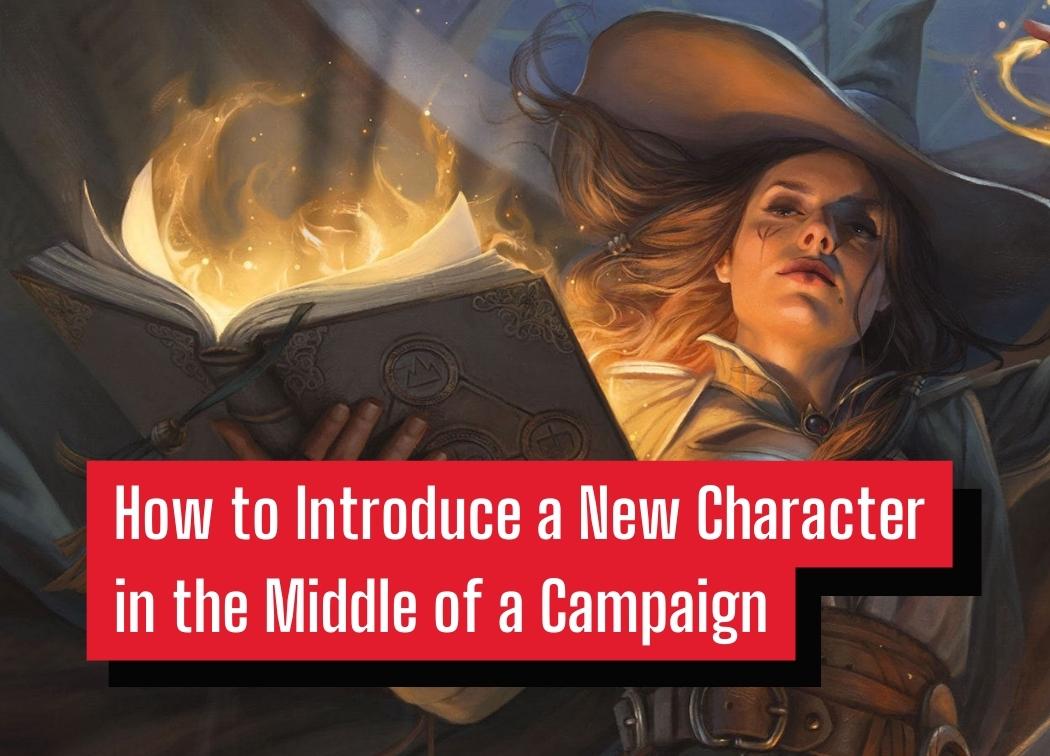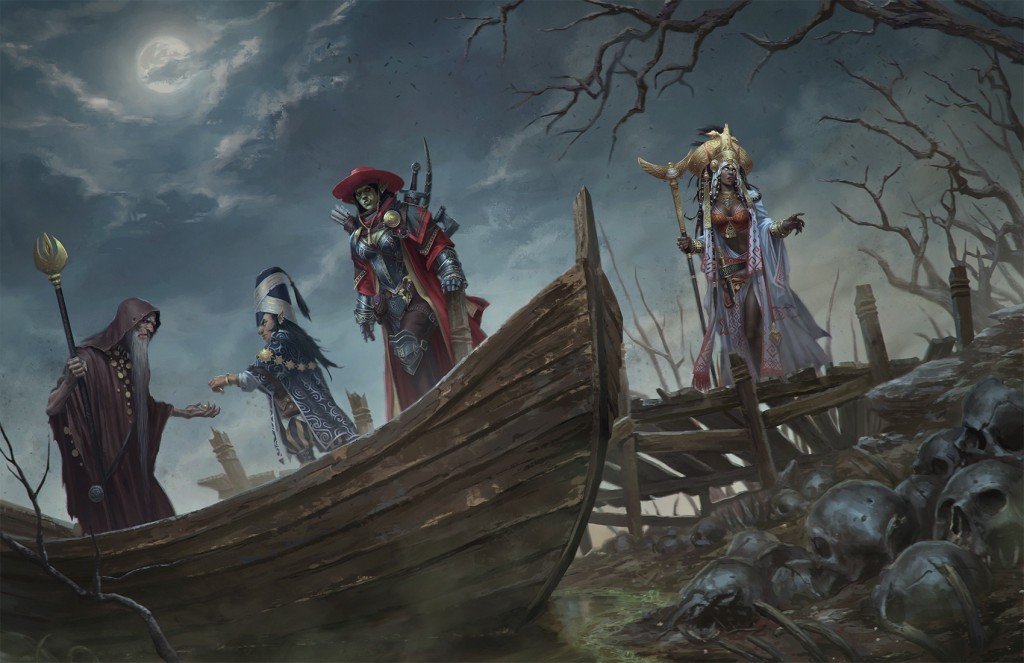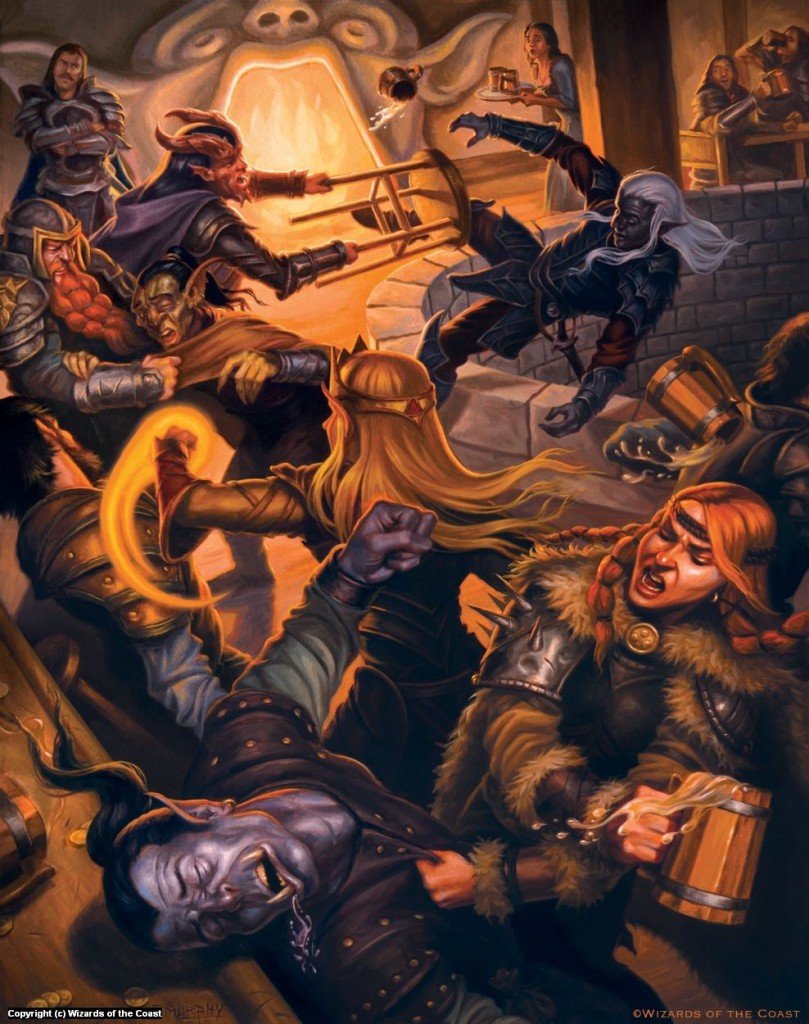How to Introduce a New Character in the Middle of a Campaign

My Shadow of the Demon Lord group has played maybe six total sessions since May (!?) when I wrote about how I prepped the campaign using OneNote. Yeah, real life is a scheduling nightmare I swear, but that’s not the point.
My point is that I’ve managed to kill two characters and come fairly close to killing about four others in that period. It’s a deadly game, but that comes with the territory for that type of system and setting.
However, that’s lead me to something that I haven’t had to do in my D&D 5e game in a long time; introduce a new character to the party.
See in most TTRPGs when a player’s character dies the player has to roll up a new character if there is no way to resurrect their deceased one. I’m sure there’s a game out there where the player gets shot out of a cannon or stranded on a desert island until the campaign ends, but I haven’t seen one.
Creating a new character is usually a fun time. It gives you an excuse to try out something brand new or to try a new flavor of a playstyle you already like. This isn’t the hard part of switching characters in the middle of a campaign though. The challenging part is finding a way to seamlessly weave this character into the game.

The Player’s Responsibility
If we’re being perfectly honest here, there isn’t a lot that the player is responsible for in a TTRPG. All you need to do is keep your character sheet updated, show up on-time, and don’t be a jerk. It’s wild how many people can’t seem to do all that, but regardless, you’re not doing nearly as much work as a GM or DM.
However, creating a new character is one of the few parts of the campaign where the players should be doing more work than the GM or DM!
During the initial stages of a campaign, it’s advised that every group should participate in a session 0. This is a chunk of time where the whole group sits down and talks about what they like, what they don’t like, and sets some ground rules for the game. In addition to that, the party should also figure out what they’d like to be playing.
When I say that, I don’t just mean that the party should talk about their party composition or anything like that. What they need to figure out is “what is our purpose?” and “why are we adventuring together?”. Answering those two questions will make everyone’s time in the campaign considerably more enjoyable.
However, things get more difficult when a new character gets thrown into the mix after all of this has been sorted out. This new character may have no connection to the party at all before joining up with them and the party may have lost a key member of their group. The party dynamic could change significantly.
As the player of this new character, it’s your responsibility to ensure that this character is going to work out.
What’s My Motivation?
It’s not the GM’s responsibility to determine what the party’s motivation is in a campaign. They’re there to throw obstacles and large-scale problems at the party to solve. It’s not their job to tell you why you should care about these issues in the first place.
As the party adventures their way through the campaign they’ll establish their motivations and flesh-out the direction(s) they wish to take their characters.
If you have to make a new character or you’re joining an already-established game you’ll need to figure out a way to create a character whose ambitions and motivations work alongside the rest of the party’s. This is your goal when making your new character.
This doesn’t mean that your character needs to be a “yes man” to the party. You just need your character to have a reason for joining forces with the party.
Plays Well With Others
Your second responsibility is to ensure that the character also fits into the party’s dynamic. This is a similar goal to ensuring your motivations are aligned with the party’s, but it also goes a bit deeper.
Just because you have similar goals to the party doesn’t mean that you’ll work with the party. After all, two groups of people can have the same end-goal but cannot for whatever reason work with each other to meet their goal.
Just make a character that you know will work with the established party members. Be someone that, while they may butt heads with, will ultimately be a valued member of the team.
For example, Don’t play a serial killer in a party of do-gooders because they have no reason not to just cuff you and throw you in jail.
This is not difficult to accomplish mind you, but it’s something worth mentioning.

Timing is Everything
Now that you’ve gotten your character taken care of and have come up with their motivations/personality, it’s time to introduce them to the party! Here’s where you, as a player, can go back to being more hands-off with regards to pre-game prep.
At this stage of a new character introduction, you’re going to involve your GM or DM. That is if you hadn’t already been involving them or asking them questions in the previous steps of character creation. It’s probably a good idea to have at least kept them in the loop on your intentions up to this point.
The GM is now responsible for determining when, how, why, and where your new character is introduced to the party. This should be a somewhat collaborative effort in the sense that you can veto the idea if it’s dumb or uncomfortable, but in most cases, I find that the player doesn’t care all that much as long as two things are taken into consideration.
- They are introduced quickly.
- No one wants to wait around an entire session to start playing the game again. There is no “perfect moment” that you need to hold up an introduction for. The introduction just has to make narrative sense.
- It’s a positive introduction.
- Don’t introduce a new character as an antagonist (unless there’s a reason the table is ok with this). The player has done their due-dilligence in ensuring that their character will work well with the party dynamic. Don’t ruin this with a bad introduction.
Introducing a new character shouldn’t take much thought or effort. Especially if they’re replacing a recently retired character during a transition period in the campaign. The new character may come with information for their next quest or they may have an “in” with a secret organization the party has been trying to join.
Introducing a character when there is no immediate threat present is easy. It’s not so simple of a task when you’re somewhere dangerous, like a dungeon.
What About When You’re in a Dungeon?
Dungeons are awesome. They’re stressful locations to be in as a player since you’re constantly surrounded by unknown threats, but that’s part of their charm!
Dungeons are, unfortunately, not so awesome of a place to introduce a new character to the party. Ironically, they’re also one of the more common places to introduce a character due to the likelihood of a character being killed as they explore the dungeon. So, how do we introduce a character in one?
The DM is going to have to take the lead on this one. This is because the players typically don’t know what to expect within the dungeon. If they have ideas for how to introduce their character, they’re more than welcome to share them, but their idea may not be possible.
Use the character’s backstory and motivations as a way to determine how to introduce the character. Figure out a scenario that should come up relatively soon for the party within the dungeon and is on-point for this new character’s personality.
For example, you could introduce the heroic paladin fighting the cultists within the dark halls of the keep. The greedy thief could have locked themselves in the treasure vault.
Be creative and take your cues from the player’s hard work on their character! However, be sure to not make the player wait too long to get back into the game. Most of us would rather have a sub-par introduction and be rolling dice sooner than wait for the “perfect moment” and sit around for an hour+.
Conclusions
There are all sorts of reasons why you may need to introduce a new character to the party. The player’s original one died or retired, a new player joins the game, or you have a friend that wants to just play as a guest for a few sessions while they’re in town.
My only expectation for my players (and myself when I’m the player) is that their character meshes with the group. Their ambitions shouldn’t intersect with the party’s, and their personalities shouldn’t be tailor-made to antagonize the established group (unless everyone agrees that it’s fine).
Once the character has been created and fleshed-out, the GM or DM is now responsible for figuring out how to introduce the new character to the party. Your job is to set up a favorable opportunity for the player to use to be accepted by the group. This isn’t a difficult feat to manage though in certain situations you may need to be creative.
Just make sure that the character will work well with the party and the introduction happens quickly and sensibly and everyone at the table will be happy!
